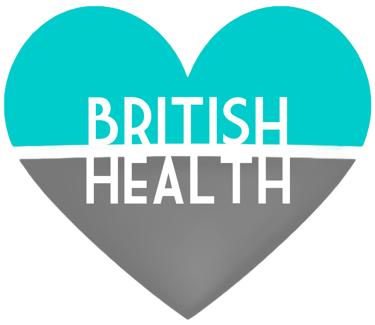What are the Healthiest Meats?
Here we look at the healthiest meats, from turkey and salmon to lesser known meats such as ostrich and kangaroo. Explore alternatives to beef and pork while maximising nutrition
NUTRITION
9/29/20254 min read


Understanding Lean Meats
Lean meats, particularly turkey and chicken, have gained recognition for their favorable nutritional profiles and are integral to a balanced diet. These meats are notably high in protein while being low in fat, making them excellent choices for individuals looking to maintain or lose weight without sacrificing essential nutrients. Half a skinless chicken breast contains approximately 25 grams of protein and only around 3 grams of fat, while turkey offers a similar profile, with skinless turkey breast providing about 26 grams of protein and 1 gram of fat. This combination of high protein and low fat makes them valuable options for diverse dietary needs.
White meat, found in the breasts, contains fewer calories and less fat than dark meat; which is found in the thighs and legs. While both types of meat provide significant protein, dark meat may represent a richer source of certain micronutrients, such as iron and zinc.
To further enhance the health benefits of turkey and chicken, it is advisable to opt for skinless varieties. The skin contributes additional saturated fat and calories, which can detract from their lean status. Healthy preparation methods such as grilling, baking, or steaming can significantly reduce added fats from cooking oils or sauces. Furthermore, incorporating an array of herbs and spices can enrich flavour without compromising the health attributes. Overall, lean meats like turkey and chicken serve as versatile, nutritious staples that can support various dietary and health objectives.
Lesser-Known Lean Options
As individuals strive for healthier dietary choices, exploring lesser-known lean meats can provide a wealth of nutritious options. One particularly notable alternative is ostrich, which stands out in the realm of meat consumption due to its impressive nutritional profile. Ostrich is recognized for its remarkably low-fat content compared to more conventional meats such as beef or pork. On average, ostrich contains about 2 grams of fat per 100 grams of meat, making it an excellent choice for those looking to reduce fat intake while still enjoying a protein-rich diet.
With approximately 25 grams of protein per 100 grams, ostrich meat rivals traditional sources like chicken and turkey, making it a viable option for muscle growth and maintenance. Moreover, ostrich is packed with essential vitamins and minerals, including vitamin B12, iron, and zinc, which support overall health and well-being. Its nutrient-rich profile makes it an attractive choice for health-conscious consumers striving to maximise their dietary intake.
Besides ostrich, there are other unconventional meats worth considering for a healthier diet. Examples include bison, venison, and kangaroo, each offering lean alternatives that are also lower in fat and calories compared to the more commonly consumed meats. Bison, for instance, is densely rich in nutrients, containing high levels of protein and iron while providing a rich flavour profile. Similarly, venison is lean and lower in cholesterol, making it a heart-friendly choice.
The Superfood Status of Salmon
Rich in omega-3 fatty acids, particularly EPA and DHA, salmon is recognised for its many health benefits. Omega-3s are essential fats that the body cannot produce on its own, so must be acquired through diet. These fatty acids play a fundamental role in enhancing heart health, as they contribute to lowering blood pressure, reducing triglycerides, and decreasing the risk of arrhythmias, making salmon a cornerstone of a heart-healthy diet.
In addition to cardiovascular benefits, the anti-inflammatory properties of omega-3 fatty acids found in salmon are noteworthy. Chronic inflammation is linked to many diseases, including arthritis and various cardiovascular conditions. Consuming salmon regularly may help mitigate inflammation, contributing to overall wellness. Furthermore, salmon provides an array of other vital nutrients, including high-quality protein, B vitamins, potassium, and selenium, all of which support various bodily functions, from cellular repair to energy production.
When comparing salmon and other meats, it becomes evident that fish provides distinct advantages. While red meats offer protein and iron, they can also come with higher levels of saturated fats. In contrast, salmon delivers lean protein along with the benefit of omega-3 fatty acids. However, concerns about mercury levels in fish, especially larger species, can lead to hesitation in its consumption. It is important to note that salmon is generally lower in mercury than other fish, making it a safer choice. Regular consumption of salmon, when incorporated into a balanced diet, can positively contribute to nutritional health without overexposing the body to harmful contaminants.
Nitrites and Nitrates in Pork Products
Pork products, particularly processed varieties, often contain additives such as nitrites and nitrates. These substances serve as preservatives, enhancing flavour and extending shelf life by inhibiting the growth of harmful bacteria. However, their consumption has raised health concerns. When nitrites and nitrates are ingested, they can convert into nitrosamines, which have been associated with a higher risk of specific cancers, particularly colorectal cancer.
Research indicates that the frequent consumption of processed meats that contain these additives can pose potential health risks. The World Health Organization has classified processed meats as a Group 1 carcinogen, placing them in the same category as tobacco products and asbestos. As consumers become more health-conscious, the focus has shifted toward understanding these additives' ramifications and seeking alternatives that provide nutritional benefits without the associated risks.
Fortunately, there are healthier options available. Fresh cuts of pork, such as loin and tenderloin, are naturally low in fat and free from harmful additives. These cuts not only preserve the meat's nutritional integrity but also offer a rich source of protein, vitamins, and minerals while minimising exposure to potentially harmful preservatives.
Emphasising fresh and minimally processed meats enhances health an contributes to a more balanced nutritional profile. Transitioning to these alternatives can promote overall well-being and reduce the risks associated with additives found in processed pork products.

